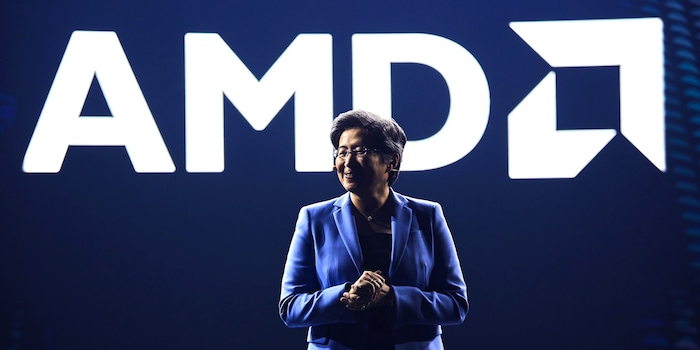

Fairphone 5
256 GB, Transparent Edition, 6.46", SIM + eSIM, 5G

They're finally here, the new Ryzen 5000 Mobile processors. Thanks to its Zen 3 architecture and eight cores, AMD has engineered the most powerful notebook CPUs in the world. Bizarrely, three models in the range still use the old Zen 2 architecture.
AMD certainly made an impression CES. Last year, the company impressed with its Ryzen 4000 Mobile processors. Not only thanks to the 4000H series with a TDP of 45 watts, coveted among gaming enthusiasts, but especially because of the 35-watt version for more compact laptops, which made gaming notebooks such as the ROG Zephyrus G14 the most sought-after model of the year.
And now AMD is following suit. Twelve months after the debut of new processors codenamed «Renoir», «Cezanne» and «Lucienne», aka the Ryzen 5000 Mobile, follow suit.
In contrast to other years, all new AMD CPUs have Simultaneous Multithreading (SMT). In addition to up to eight cores, which AMD offers in all TDP variants in contrast to Intel, a Vega graphics chip is also integrated in the mobile processors. Unfortunately, no official information has been provided about this. Only the (AMD) gods know how many shader units are present and what clock frequency the GPU has.
Here's an overview over all Ryzen 5000 processors:
Although AMD holds the sceptre for mobile processors, there's at least some consolation for Intel: the Core i7-11375H SE with four cores and a TDP of 35 watts, introduced yesterday, has the largest single core boost at 5.0 GHz.
I find my muse in everything. When I don’t, I draw inspiration from daydreaming. After all, if you dream, you don’t sleep through life.
From the latest iPhone to the return of 80s fashion. The editorial team will help you make sense of it all.
Show allThis has caused some confusion, as the 5000 series doesn't just include Cezanne processors, but also three Lucienne models. Lucienne is virtually a second printing of last year's Renoir processors. They'll be launched with the old Zen 2 architecture and only have half the L3 cache compared to Cezanne's Zen 3 architecture – i.e. 8 instead of 16 megabytes. The three «black sheep» can be recognised by the fact that they're 5000U processors with 15 TDP watts, all bearing an odd character following the model number (Ryzen 7 5700U, Ryzen 5 5500U and Ryzen 3 5300U).
| Cores and Threads | TDP | Base frequency | Max. turbo frequency (single core) | L3 Cache | |
|---|---|---|---|---|---|
| Ryzen 9 5980HX
(Zen 3) | 8 cores, 16 threads | 45 W+ | 3,3 GHz | 4,8 GHz | 16 MB |
| Ryzen 9 5900HX
(Zen 3) | 8 cores, 16 threads | 45 W+ | 3,3 GHz | 4,6 GHz | 16 MB |
| Ryzen 7 5800H
(Zen 3) | 8 cores, 16 threads | 45 W | 3,2 GHz | 4,4 GHz | 16 MB |
| Ryzen 5 5600H
(Zen 3) | 6 cores, 12 threads | 45 W | 3,3 GHz | 4,2 GHz | 16 MB |
| Ryzen 9 5980HS
(Zen 3) | 8 cores, 16 threads | 35 W | 3,0 GHz | 4,8 GHz | 16 MB |
| Ryzen 9 5900HS
(Zen 3) | 8 cores, 16 threads | 35 W | 3,0 GHz | 4,6 GHz | 16 MB |
| Ryzen 7 5800HS
(Zen 3) | 8 cores, 16 threads | 35 W | 2,8 GHz | 4,4 GHz | 16 MB |
| Ryzen 5 5600HS
(Zen 3) | 6 cores, 12 threads | 35 W | 3,0 GHz | 4,2 GHz | 16 MB |
| Ryzen 7 5800U
(Zen 3) | 8 cores, 16 threads | 15 W | 1,9 GHz | 4,4 GHz | 16 MB |
| Ryzen 7 5700U
(Zen 2) | 8 cores, 16 threads | 15 W | 1,8 GHz | 4,3 GHz | 8 MB |
| Ryzen 5 5600U
(Zen 3) | 6 cores, 12 threads | 15 W | 2,3 GHz | 4,2 GHz | 16 MB |
| Ryzen 5 5500U
(Zen 2) | 6 cores, 12 threads | 15 W | 2,1 GHz | 4,0 GHz | 8 MB |
| Ryzen 3 5300U
(Zen 2) | 4 cores, 8 threads | 15 W | 2,6 GHz | 3,8 GHz | 8 MB |


Fairphone 5
256 GB, Transparent Edition, 6.46", SIM + eSIM, 5G